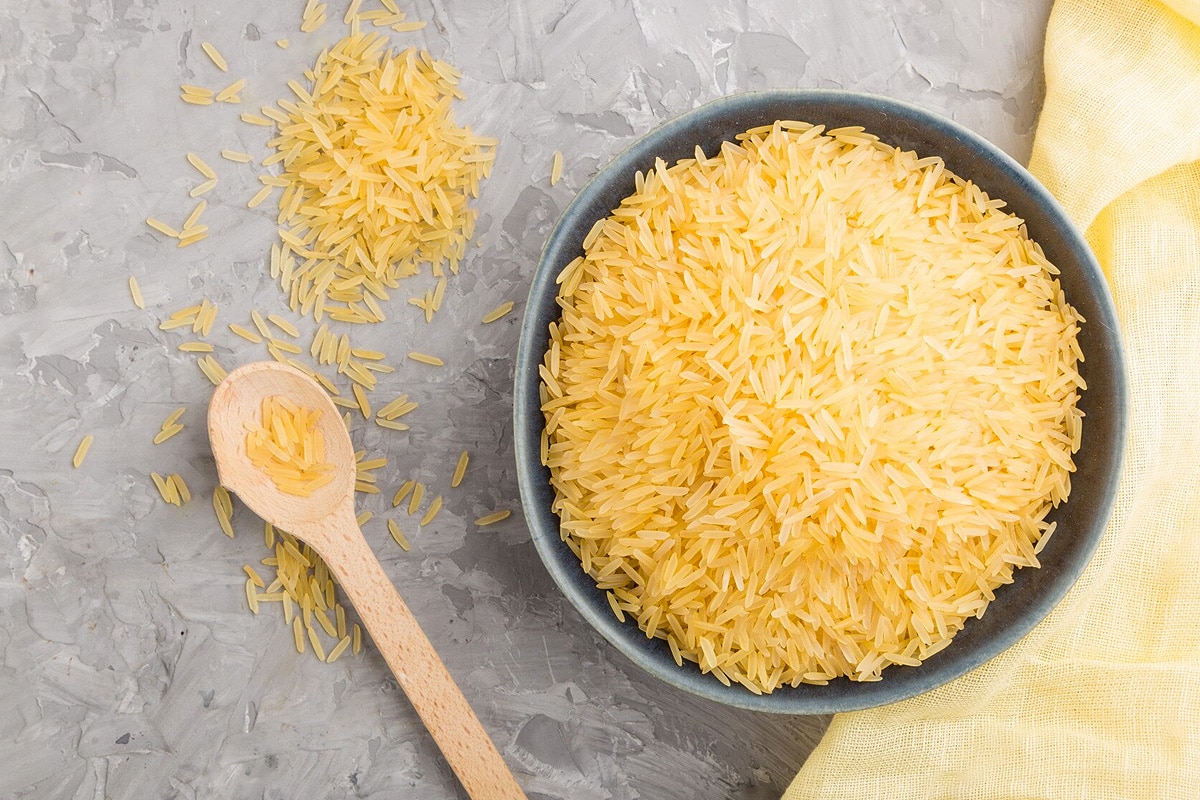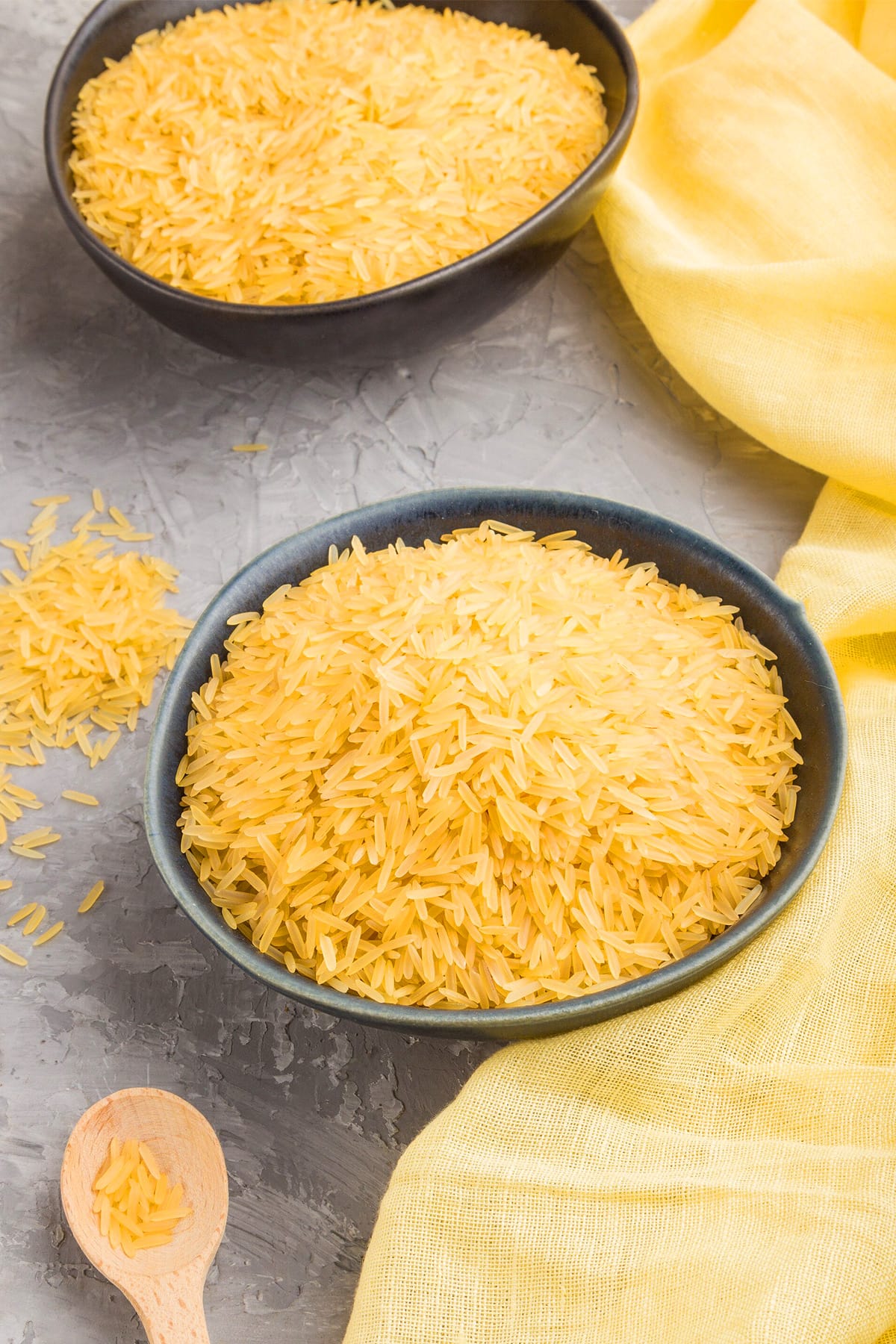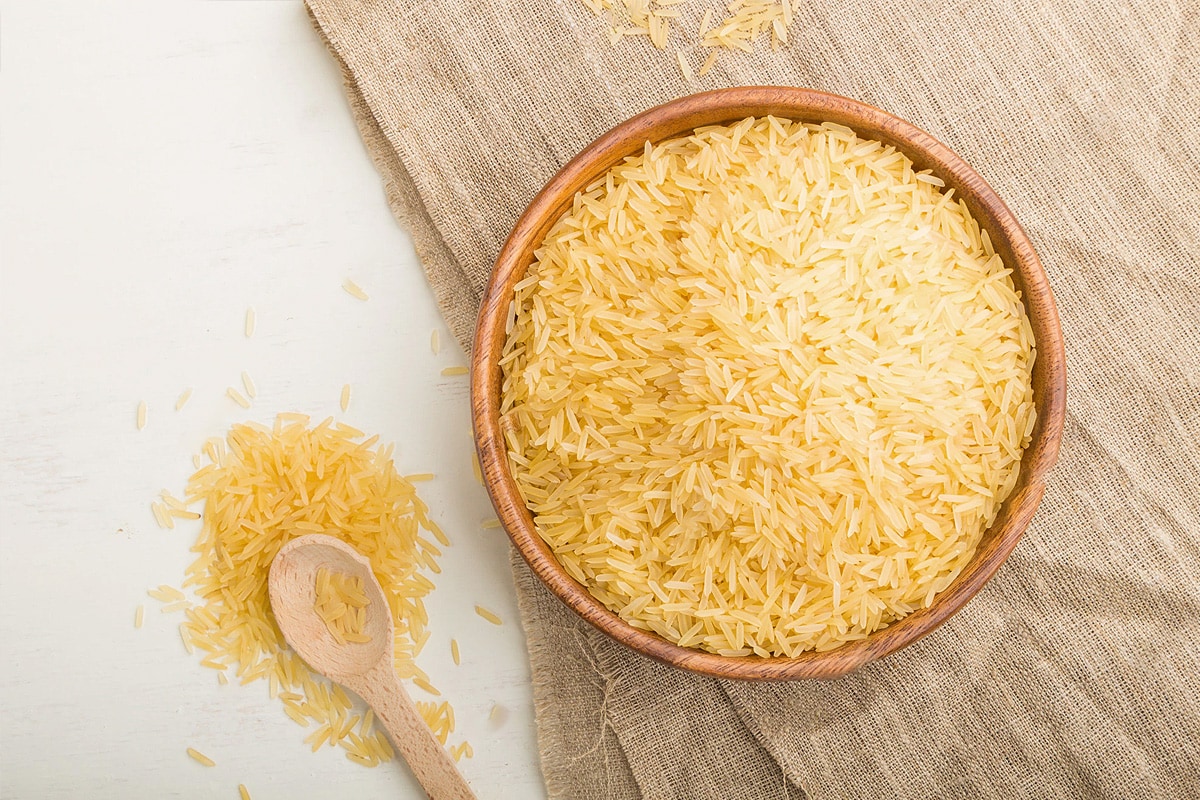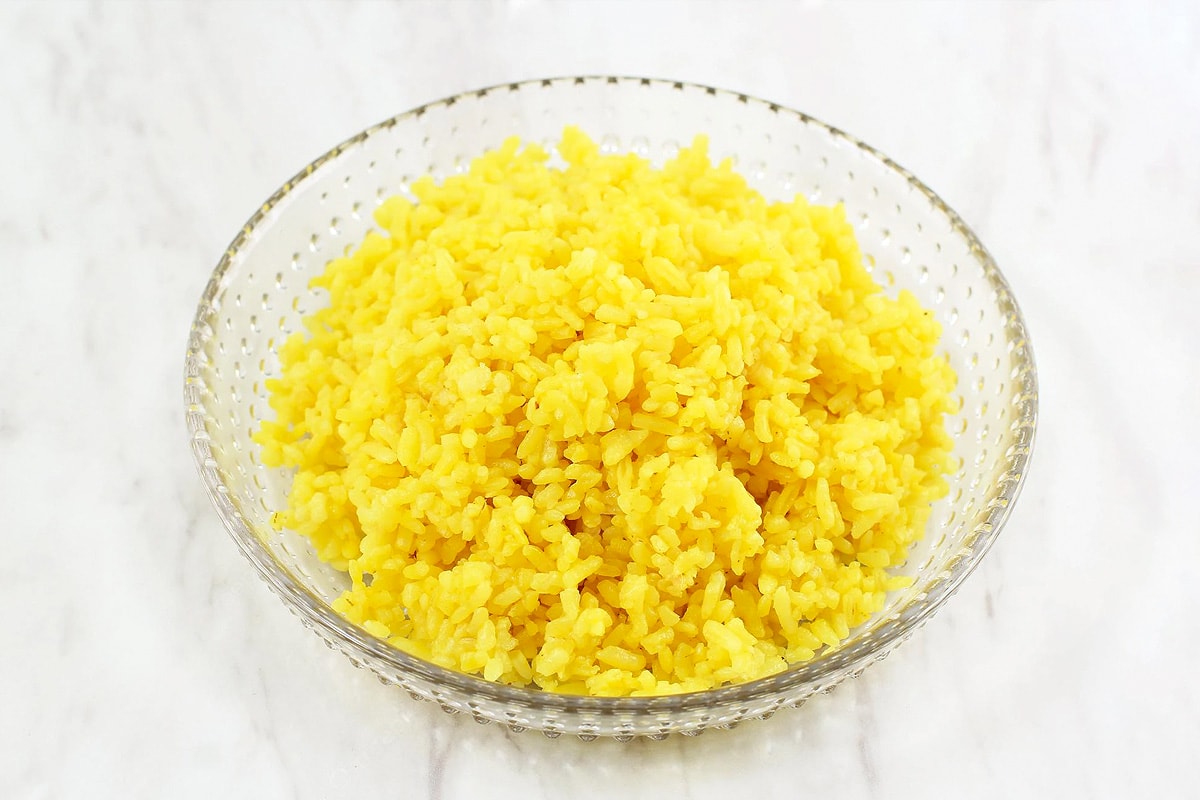Wondering if yellow rice is good for you? Did you know that this is not only colored rice, but it is a lot healthier than regular white rice? Find what is so special and why you should eat it more often.

Yellow rice, also called golden rice, is a special variety of rice that was genetically modified. Also, in some places, you may find that yellow rice is also called the regular white rice but that was later colored during the cooking process.
To get this intense yellow rice from the regular rice, you will need to mix the white rice with spices like annatto, saffron, or turmeric.
Quick Note: We should point out that even after cooking the yellow rice was colored artificially, it doesn’t have too much in common with the regular golden rice. In this article, we will concentrate on the original dry yellow rice.
What is special about this type of rice? The point is not only in the beautiful color of the product but in its composition.
Actually, the golden color of the yellow rice variety is due to the high content of beta-carotene in it – provitamin A. This substance itself in its pure form has a bright orange color.
Thanks to it, carrots, pumpkins, and other fruits and vegetables have such a rich “sunny” color.
As in yellow rice, the beta-carotene is found in a smaller quantity. If we compare it with the vegetables from the previous paragraph, the rice is not orange, but has a “golden” yellow color.
How and Why Is Yellow Rice Made?

Yellow rice is one type of food developed by the food industry that is genetically modified. Yellow rice is produced by bio synthesizing the content of beta-carotene, which is also the main source of vitamin A.
Actually, yellow rice was developed for African and Asian countries where people are deficient in vitamin A. So, this yellow rice was not only made to get this intense yellow color just for the beauty of it but to improve the health (especially by adding more vitamin A) of the people from these regions.
Like most types of rice, this type is easy to plant and grow. The only difference is in the leaves, which can naturally produce beta-carotene genes.
If you know that you also have a vitamin A deficiency, you need to consider eating more yellow rice.
Benefits of Yellow Rice
Yellow rice is healthier than regular rice. As mentioned above, its main value lies in the increased content of beta-carotene, from which the human body synthesizes vitamin A.
A cup of yellow rice (200 grams) is enough to meet the daily requirement of the body for vitamin A. This vitamin is necessary to maintain immunity, and normal vision (prevents the process of vision deterioration) and plays a very important role in metabolism and tissue regeneration.
Showing antioxidant properties, this rice slows down the aging process and promotes the performance of cellular and subcellular membrane of their functions.
It has been proven multiple times that vitamin A also has anti-cancer properties, preventing the reappearance of tumors after removal, increasing the content of “good” cholesterol in the bloodstream, and enhancing the effect of vitamin E.
This is why all of us should pay attention to the amount of Vitamin A that we consume and are getting daily in our body.
What Are the Benefits of Yellow Rice?

- Vitamin A. As mentioned above, yellow rice contains a rich content of beta-carotene, which is the main source of vitamin A. Compared to other types of rice, this one has the highest content of vitamin A;
- Improves vision. Since rice contains vitamin A, it helps improve eyesight. Vitamin A is helpful in improving the macula of the eyes by improving the eye muscles for better functioning. As a result, vitamin A may help the development of a vision for kids, and it may also help prevent visual impairment in the elderly;
- Prevents measles. Some studies show that the vitamin A found in yellow rice can prevent measles. Although, there is as yet no clear explanation as to how this rice might be effective in treating measles, other than the idea that vitamin A and anti-inflammatory properties fight measles infection;
- Reduces high blood pressure. The benefits of eating yellow rice can reduce high blood pressure, which is good therapy for people who have problems with it. By controlling blood pressure, many diseases and complications associated with blood pressure can be avoided;
- Antioxidant. This rice will also serve as an antioxidant, which will help prevent the negative effects of free radicals, as well as signs of premature aging. Therefore, golden rice gives the appearance of a healthy and more youthful appearance;
- It helps to strengthen the immune system. Yellow rice is also able to strengthen and restore immunity, which will increase protection against bacterial and viral diseases. Moreover, this type of rice can serve as a source of nutrients for the body so that the metabolism functions properly.
- It helps to avoid eye disease. Another health benefit of yellow rice is the prevention of eye diseases. Vitamin A is a natural way to improve eye health. Therefore, common diseases such as cataracts and glaucoma can be prevented in old age. What’s more, the vitamin optimizes the optic nerve to avoid visual disturbances as well as macular degeneration, resulting in clearer central vision;
- It Prevents food system disease. Another health benefit of yellow rice is to reduce the occurrence of gastrointestinal disorders that usually lead to diarrhea and indigestion. As a result, the digestive metabolism does not function normally. If you start eating golden rice, it will help you ease your digestive and bowel movements. In addition to being beneficial to the digestive tract, golden rice is also a mild astringent that restores intestinal mucus. This will help ease the symptoms of digestive disorders. A very healthy yet simple product and other benefits of lemon for digestion may surprise you;
- It Maintains Normal Cholesterol Levels. Another benefit of yellow rice includes maintaining blood cholesterol levels, which helps to avoid cardiovascular diseases like stroke and heart attack.
- And another benefit of rice is that it will help you lose weight.
The Harm of Yellow Rice
By itself, yellow rice does not pose any danger to our health. However, you need to know that this product is quite high-calorie, and rich in carbohydrates. Therefore, when consumed in large quantities, it can lead to an increase in body weight.
Quick Note: You should also not abuse eating yellow rice if you have stomach problems.
The approximate energy value of yellow rice is 350 kcal; Proteins – 8 g; Fats – 0.5 g; Carbohydrates – 78g.
Cooking Yellow Rice

Cooking yellow rice is just as easy as making regular rice. Here is a list of steps to take:
- Take a bowl with a thick bottom (there is less chance that the rice will burn), pour 2 cups of water into it, and add salt and spices to taste;
- Pour 1 cup of rice and add 1 tablespoon of vegetable oil; Then, put the pan on maximum heat and bring to a boil, then immediately reduce the heat to a minimum.
- In the process of cooking rice without the need (if it does not burn), it is advisable not to mix, otherwise, it will not be friable;
- As soon as the water level in the pan becomes lower than the rice level, you need to remove the pan from the stove, cover it with a lid and leave it to cool for 10-15 minutes without removing the lid.
- During this time, the remaining water will be absorbed by the rice. Rice is cooked for 40-50 minutes, but lovers of not too soft rice can limit themselves to 30-35 minutes.
Conclusion
As a result, it should be said that yellow (or golden) rice is an excellent alternative to other varieties of rice. If you don’t consume enough vitamin A, that is one of the best types of rice that you should consider eating more often.
Yellow rice is easy to prepare and contains a lot of different components that will have a beneficial effect on your health.

Leave a Reply